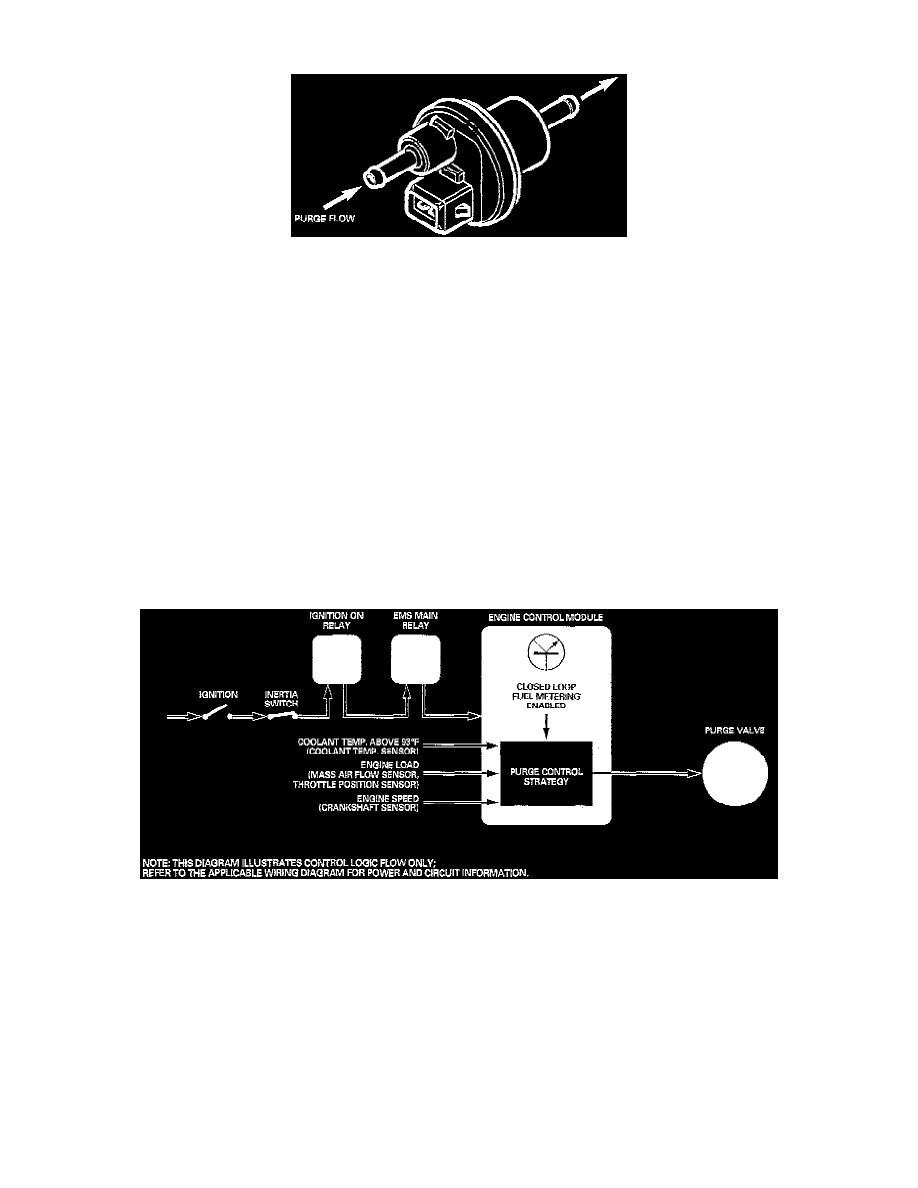XJ-6 L6-4.0L (1991)

Canister Purge Control Valve: Description and Operation
Purge Valve
The engine management ECM operates the purge control valve to allow a regulated vapor flow to the intake manifold dependent on engine operating
conditions. The purge valve is a solenoid operated valve that is normally open. The valve closing and subsequent rate of vapor flow opening is varied by
the "length" of a pulsed electrical signal provided from the ECM.
Canister Purging
The vapor absorbed by the activated charcoal in the canister is purged by using engine vacuum to draw air through the charcoal and into the intake
manifold. The conditions during which vapor is purged and the quantity purged is programmed into the ECM. The purge rate has to be sufficient
to prevent the charcoal canister from venting vapor to the atmosphere. On the other hand, purge rates that are too high would cause driveability
problems.
Canister purge is enabled by the ECM when the engine coolant temperature exceeds 34°C (93°F) and closed loop fuel metering control is
operational. The rate of purge is determined from an 8 x 16 load versus engine speed strategy.
When the ignition is turned ON (engine inoperative), the valve is fully energized and closed to prevent vapor flow to the engine. When the engine
is operating at idle and purge flow is enabled, the purge flow will be small. As engine load and speed increases, the purge rate will increase
proportionally. When the ignition is turned off the valve is fully energized and held closed for a short period to prevent vapor from being drawn
into the engine as it slows to stop to prevent run-on. Purge valve operation at idle can be detected by holding the valve in the palm of the hand.
The ECM monitors the output signal to the purge valve for on-board diagnostics.
Canister Purge Control Diagram
